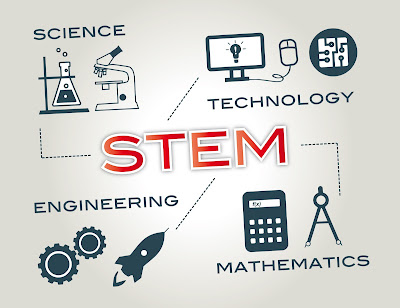Telling Stories for Science: Shackleton Style
The great American scientist Carl Sagan once remarked ‘If we teach only the findings and products of science — no matter how useful and inspiring they may be—without communicating its critical method, how can the average person possibly distinguish science from pseudoscience?’ Forty years after these words were penned, Sagan’s concern could not be more prescient. We live in an age where ‘alternative facts’ are
fast becoming a defendable
point of view, where expert opinion is now routinely
considered as just one point of view. There is clearly a need for a more scientifically literate
society, one better versed in critical thinking. But the prognosis is not positive. Across the Western World, countries like the USA, UK and Australia, report an alarming fall in the
number of students taking science, technology, engineering and mathematics –
the so-called STEM subjects. Sadly, multibillion dollar budget cuts in US federal STEM education funding have been identified for the fiscal year 2018, with far
reaching implications. In Australia, the trend is particularly disturbing for girls, where the proportion opting out of mathematics from Year 10 has tripled from 7.5% in 2001 to a staggering 21.4% in 2011. The practical upshot is less students are taking STEM subjects at university, magnifying a future skill shortage in the workforce.
 |
| Bringing it together: Science, Technology, Engineering and Mathematics |
Based on the current trajectory we are burdening future generations with a markedly reduced skill-set. We need to provide students with a more balanced education today. A STEM-literate population is critical for supporting future economic growth and finding solutions to the big issues of tomorrow; one that is sufficiently flexible to meet future needs and can meaningfully debate issues to make informed judgements. This is not just about knowing a random number of scientific ‘facts’, it’s about society understanding how science works: to test ideas and reach the simplest explanation. We desperately need more STEM-literate students across all levels of education, today. Urgent, practical measures are needed. Cutting education
programs set up to improve STEM engagement is not the way to do it. But we all
have a role to play. We need to value science more in society.
The question is, how do you engage without making it boring? In a little remarked May 2017 report from the Commonwealth Parliament called ‘Innovation and Creativity’, a cross-party committee on Employment, Education and Training has made some far-reaching recommendations to make Australia a more scientifically-literate society. The recommendations range from welcome proposals for dedicated STEM-trained primary school teachers, increased support for the Science in Australia Gender Equity (SAGE) program and expanded provision for STEM-training in tertiary education institutions. A substantial part of this report also focusses on how government
and institutions can more meaningfully engage with students.
As a scientist, I fear
we have sleep walked into our current predicament. Science has become so specialized;
the language is often only understandable to those in the immediate field of endeavor.
So much so, it is easy to be perceived as lacking relevance. I don’t believe
the public has lost interest, but as a scientist I know we can do better. We have a responsibility to engage the next generation in our work. After twenty years of teaching and research,
I believe we can learn from the tales of early scientists and explorers.
A century ago, the great Antarctic explorer Sir Ernest Shackleton remarked: ‘Sentiment has been the ruling force in every great work that has ever been done, and I shall be sorry when the day comes when science is divorced from sentiment or sentiment from science.’ Shackleton realized that science
on its own was not enough. You have to excite the public and the best way to do
this is by telling stories. And Shackleton was a master. A naval officer by
training, Shackleton led the extraordinary Imperial Trans-Antarctic Expedition of 1914–1917. Attempting to cross the unknown Antarctic continent, Shackleton’s
ship, the Endurance, was lost to the crushing pressure of pack ice. Shackleton and his men were stuck in the ice for two years. A
thousand miles from civilization, they faced isolation, starvation, freezing temperatures,
gangrene, wandering icebergs, and the threat of cannibalism. But by sheer positive
attitude and superb leadership, the Anglo-Irishman kept his team together,
continuing the scientific program even during some of the greatest moments of
peril. The safe return of all his men after encountering the perils of the ice was his crowning achievement in the polar regions.
The
public were electrified by Shackleton’s tales of adventure and discoveries. Photographs,
film, audio recordings, books, newspaper and magazine articles, and public
lectures were all used to whisk the audience away to Antarctica. When
Shackleton was in a violent storm, you were clinging on to the ship’s tiller
with him, when Shackleton was on the edge of starvation, your own stomach
gnawed, and when Shackleton laughed at the peculiar idiosyncrasies of the
penguins, you were laughing too; all from the safe confines of home. He was so
good that other explorers were advised to try to emulate him—though few ever
succeeded. Most important of all, Shackleton’s stories provided the public with
real insights into the climate, wildlife and geology of the south. Even the
most cynical of onlookers were educated about our planet. After Shackleton, Antarctic was no longer an unknown region to the public: it was suddenly real. This was science communication at its best and it set the standard for future efforts.
We need to remember how Shackleton told stories and captured people’s imagination. Scientists need to engage
the public with stories — just like Shackleton.


Comments
Post a Comment